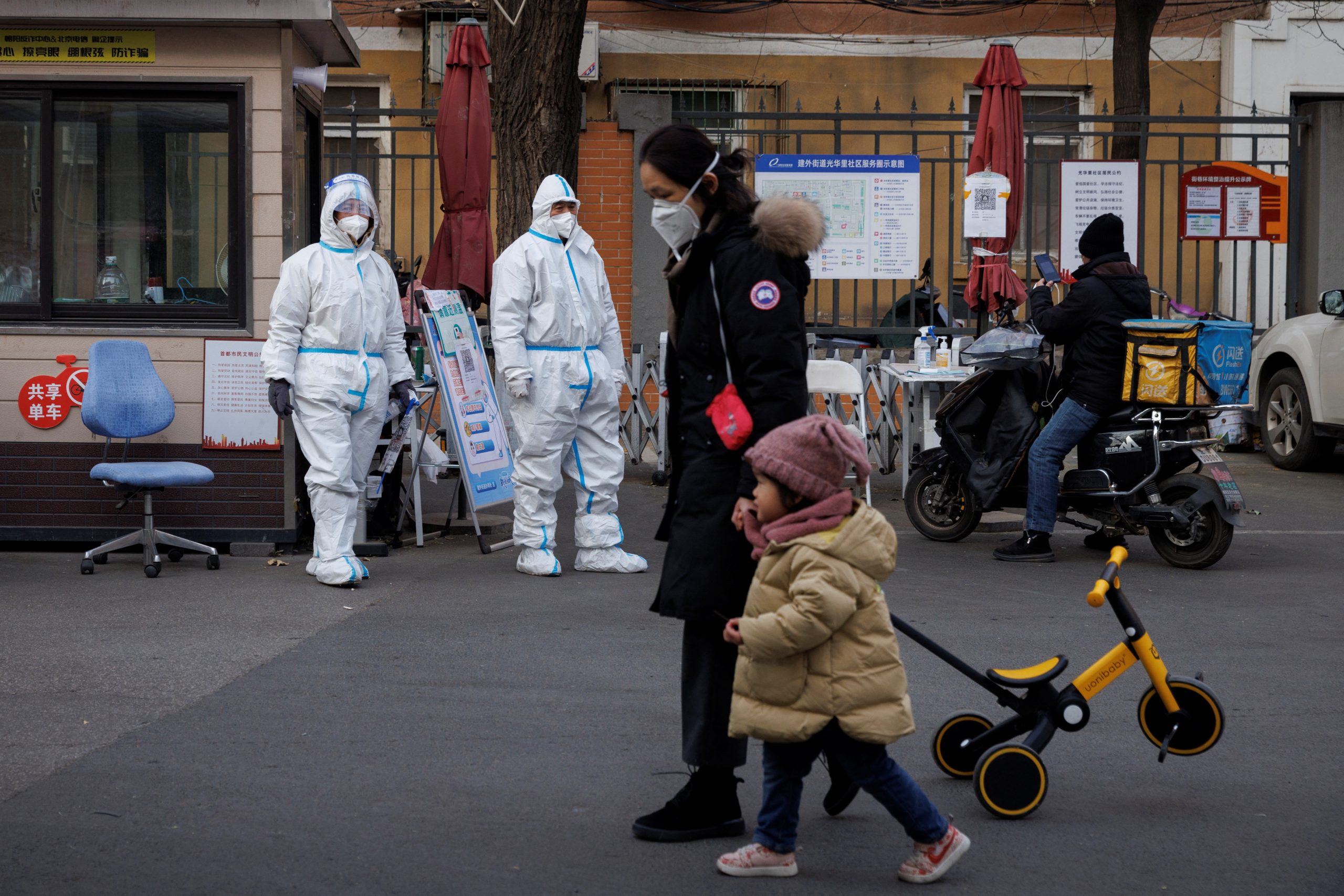
[elfsight_social_share_buttons id=”1″]
China on Wednesday announced the most sweeping changes to its resolute anti-COVID regime since the pandemic began three years ago, loosening tyrannical rules that sparked protests and hobbled the world’s second-largest economy, and by relation, the world economy.
The relaxation of rules, which includes allowing infected people with mild symptoms to quarantine at home and dropping testing for people traveling domestically, is the clearest sign that Beijing may be pivoting away from its zero-COVID policy to let people live with the disease.
But health officials are still warning that they will closely watch trends in deaths and adequacy of medical resources in case a return to “tougher measures is needed.”
In fact, amidst the government’s announced rules changes, online reports continue to show Chinese government officials welding apartment buildings’ doors closed, reportedly with residents inside in order to quarantine COVID outbreaks.
BREAKING: Amid a large Covid outbreak in China, health officials in Qingdao city are now welding people’s apartment doors shut so they can’t go out into the community. All this to “protect” the health of citizens. pic.twitter.com/HMjTzZLOIe
— James Cintolo, RN FN CPT (@healthbyjames) December 7, 2022
Many of the changes announced by the National Health Commission (NHC) reflected steps already taken in various cities and regions in recent days, following protests against draconian COVID lockdowns. Recent protests, some of which turned violent, were the biggest demonstration of public discontent since President Xi Jinping came to power in 2012.
Citizens cheered the prospect of a shift that could see China slowly emerging back into the world three years after the virus originated in the central city of Wuhan in late 2019.
Wednesday’s announcement soared to the most viewed topic on China‘s Weibo platform, with many hoping for normality after policies that have brought mental suffering to tens of millions.
“It’s time for our lives to return to normal, and for China to return to the world,” wrote one Weibo user.
For nearly three years, China has managed COVID as a disease on par with bubonic plague and cholera and as cases spread earlier this year, whole communities were locked down, sometimes for months.
Dozens of people also flocked to the Weibo account of Li Wenliang, a doctor in Wuhan who died in 2020 after sounding an early alarm about COVID-19 and whose last post has been an online haven for those looking to vent about personal woes and public policies.
“Doctor, we’ve made it through, we’re going to be free,” wrote one user. “Daylight is here,” wrote another.
Shanghai was among the first to announce that it would put the new home quarantine guidelines in place and also remove rules on travelers entering the city. The Shanghai Disneyland theme park will reopen for visitors on Thursday.
Some investors also welcomed the shift that could reinvigorate China‘s sagging economy and currency and bolster global growth.
“This change of policy is a big step forward,” said Zhiwei Zhang, chief economist at Pinpoint Asset Management. “I expect China will fully reopen its border no later than mid-2023.”
Foreign businesses in China also hope the changes will mark a shift to a broader opening.
“We need the business environment here to return to a level of predictability whereby companies can return to normal operations,” Colm Rafferty, chairman of the American Chamber of Commerce in China, said in a statement.
But NHC spokesperson Mi Feng told a news conference that any changes to measures regarding inbound travel would be “gradual”.
Protests and changing the terminology
The policy changes were announced after Xi, who regards China‘s relentless fight against COVID as one of his main achievements, chaired a meeting of the Communist Party’s Politburo on Tuesday.
Some analysts seized on a report on the meeting by the official news agency Xinhua that lacked any mention of the “dynamic zero-COVID clearing” policy, which demands cases be brought down to zero as quickly as possible.
While it was unclear whether this was a signal of a fundamental change in stance, health officials at press conferences after the roll-out of the latest measures all emphasized “dynamic optimization” of anti-epidemic measures rather than eliminating all infections.
Major cities across China, including Beijing and Shanghai, were gripped by protests last month, which started to subside amid a heavy police presence and various restrictions being lifted in different parts of the country.
Officials have not linked any of the changes, made on Wednesday or earlier, to the protests.
Copyright 2022 Thomson/Reuters. Additions and edits by Jacob Fuller, FISM News.
